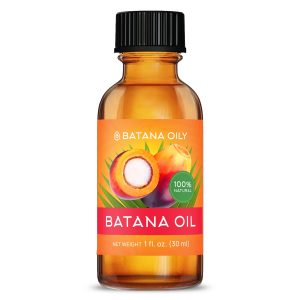The Batana Plant
The American Oil Palm (Elaeis oleifera), a lesser-known cousin of the widely cultivated African Oil Palm (Elaeis guineensis), is an important but underappreciated plant species native to tropical Central and South America. Unlike its African counterpart, which has become synonymous with large-scale agricultural production and associated environmental concerns, the American Oil Palm has a more modest footprint. It thrives in the humid rainforests of Latin America, from Honduras and Panama to Colombia and Brazil. This palm species is valued for its ability to produce oil without the high levels of deforestation and biodiversity loss that have marred the reputation of palm oil globally.

One of the most notable products derived from the American Oil Palm is Honduran Batana Oil, a unique substance highly prized for its cosmetic properties. Extracted traditionally by the indigenous communities of Honduras, Batana Oil is revered for its ability to nourish and repair hair and skin. Its extraction and sale provide vital economic support to these communities, maintaining a sustainable relationship with their environment. This contrasts with the industrial-scale exploitation often seen in other regions, highlighting a path toward more ethical and sustainable palm oil production.
In Honduras, the cultivation and processing of the American Oil Palm and its Batana Oil are integral to local culture and economy. This connection goes beyond mere agricultural activity, representing a deep bond between the people and their natural resources. Honduras, with its rich biodiversity and cultural heritage, has become a focal point for efforts to preserve traditional knowledge and practices related to the American Oil Palm. These efforts are crucial in the face of expanding agricultural frontiers and the global demand for palm oil.
The environmental impact of cultivating the American Oil Palm is significantly lower compared to its African counterpart. This is due in part to the more sustainable practices employed by local communities in Honduras and other parts of Latin America. These practices emphasize the importance of biodiversity conservation, soil health, and water quality, aligning with broader efforts to combat climate change and environmental degradation. Moreover, the American Oil Palm serves as a habitat for a wide range of wildlife, contributing to the ecological richness of the regions where it is found.
Looking forward, the American Oil Palm and its derivative, Honduran Batana Oil, present an opportunity to redefine the global palm oil industry. By focusing on sustainable, community-led production methods, there is potential to alleviate some of the negative impacts associated with palm oil cultivation. Honduras, with its rich tradition and pioneering work in sustainable palm oil production, could lead the way. This approach not only preserves the environment but also supports the livelihoods of indigenous communities, showcasing a model of harmony between human activity and nature.



